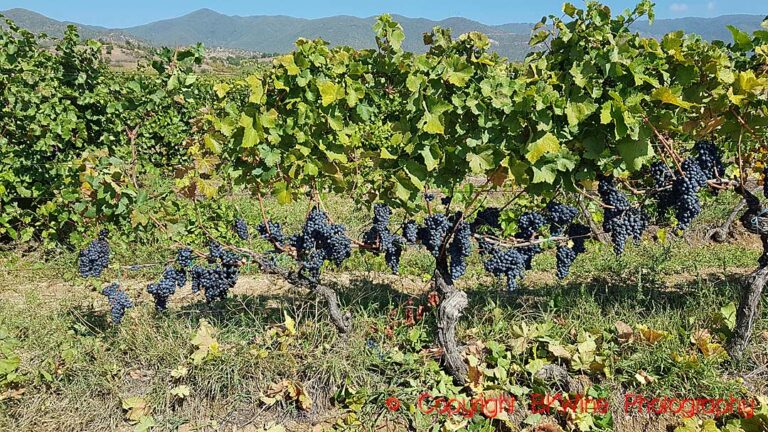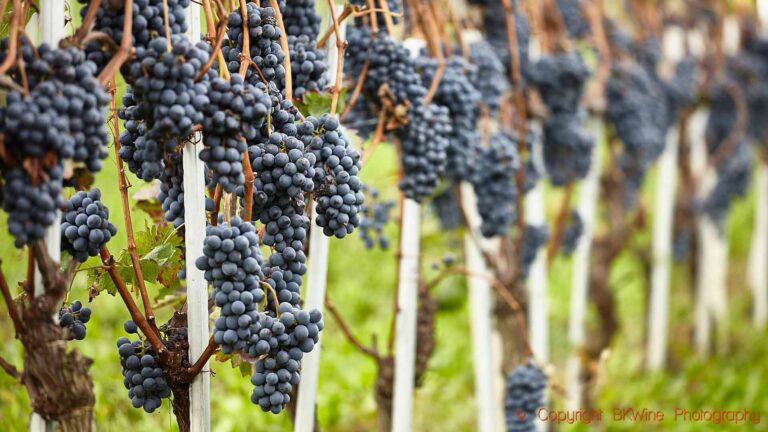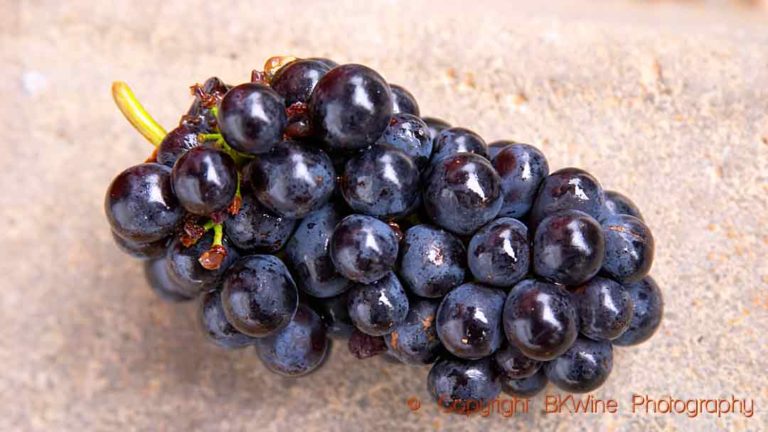It is a bit of a trend in the world of wine today to look for more unusual grapes. We had the opportunity to try a variety of wines made from “uncommon” grape varieties, silvaner, weissburgunder (pinot blanc), grauburgunder (pinot gris) and spätburgunder (pinot noir), in a tasting organized by the German Wine Institute. Carl-Erik Kanne reports and recommends his favourite wines.
The German Wine Institute had organized a tasting to show that Germany today can produce good wines even from non-traditional German grape varieties.
It restricted itself to the four most important, namely, silvaner, weissburgunder (pinot blanc), grauburgunder (pinot gris) and spätburgunder (pinot noir).
Virtually all German wine regions were represented except Saale-Unstrut.
Germany is, and has long been, primarily known for its white wines. Red German wines have languished in an anonymous existence.
The northern location of most of Germany’s wine regions makes it more difficult to find suitable varieties to cultivate and that can also be economically viable for the grower.
Spätburgunder
Spätburgunder (pinot noir) is grown, however, with success in many areas mainly in the Ahr and in Baden. In total there were 16 wines to try, not only from those areas but also from Rheinhessen, Pfalz (Palatinate) and Franken (Franconia).
The general impression of the wines reinforced the view that it is in Baden and Ahr that the best wines are produced. They make wines that have structure and balance and often suitable for ageing.
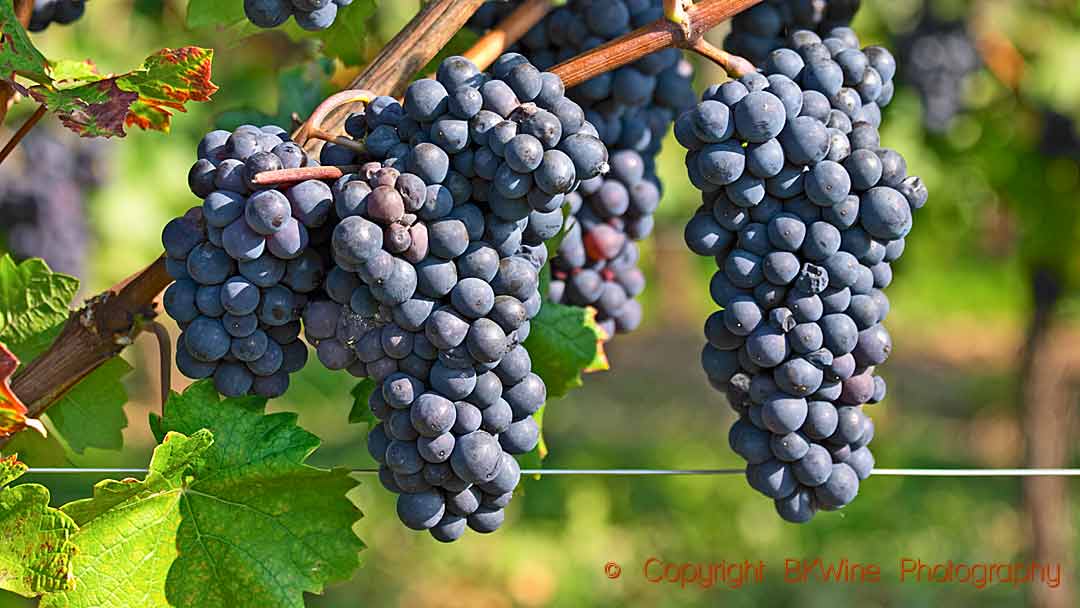
The best wines in my opinion were from Ahr. Meyer Näkel’s Pinot Noir Blauschiefer 2011, with good acidity, lovely red fruit with nice minerality and moderate tannins in good balance and with structure.
Also Peter Kriechel’s Spätburgunder 2009 had good acidity, nice fruit and good structure and a long finish and can be recommended.
Of the wines from Baden I liked the Dr. Heger Blauer Spätburgunder 2009 and Weingut Kaiserstühler Oberrotweils Oberrotweiler Henkeberg Spätburgunder trocken 2011 also deserves to be mentioned as an interesting wine to try.
Many of the wines from other districts good and easy drinking but lacked in my opinion the depth which I would like to have in a pinot noir.
Some exceptions to this rule that I noted with pleasure:
From Nahe, Weingut Schäfer-Fröhlich 2008 Spätburgunder “R” which was a treat to try with a fine balance between acidity and fruit and a long finish.
From Württemberg, Weingut Collegium Wirtemberg, Spätburgunder trocken 2008, which I think I may name as one of the evening’s most elegant wines.
Finally, from Rheinhessen, I remember well the Spätburgunder trocken 2009 Oppenheimer Herrenberg from Weingut Manz, good structure and nice balance.
Silvaner
If I leave the red grapes and move to the whites then Silvaner is a grape that has long been regarded as Franken’s own grape. Although it is grown in most of Germany’s wine regions, the wines from Franken are considered to have the most typical character that reflects the soil of mussel shell chalk which is common here.
I guess I think that there is still some justification for that claim judging from for instance the wines from Juliusspital, Silvaner Kabinett trocken 2012, and Iphöfer Kronsberg Silvaner Erste Lage trocken 2012, that in a brilliant way showed how good wines from silvaner can be.
The same was true for the Frickenhäuser Kapellenberg Silvaner trocken 2011 from Weingut Bickel-Stumpf, that was wonderfully tasty and had good length in the finish.
The selection of silvaner from growers outside Franken was pretty limited thoug, but one that caugh in my mind was a wine from Weingut Thörle in Rheinhessen, Saulheimer Silvaner Kalkstein trocken 2012, which was at least at the same level as the wines from Juliusspital, perhaps thanks to that the grapes come from the lime richest top positions in the vineyard. Anyhow, the wine had good freshness in the acidity, good fruit with hints of pear and mineral, and a long elegant finish. Nice balance!
Weissburgunder and grauburgunder
Moving on to the weissburgunder (pinot blanc) and grauburgunder (pinot gris), there was a surprisingly wide range of wines from outside of Baden that is usually considered as the main area for these grapes.
Not including sparkling wines, there were 11 different weissburgunder and 8 grauburgunder to try.
Almost all the wines from Baden were much drier, i.e. had less residual sugar, than wines from other regions.
This is something that makes the wines from pinot blanc and pinot gris from Baden interesting to compare with the same grape variety wines from Alsace. Baden wines have here also generally been drier than its Alsatian cousins.
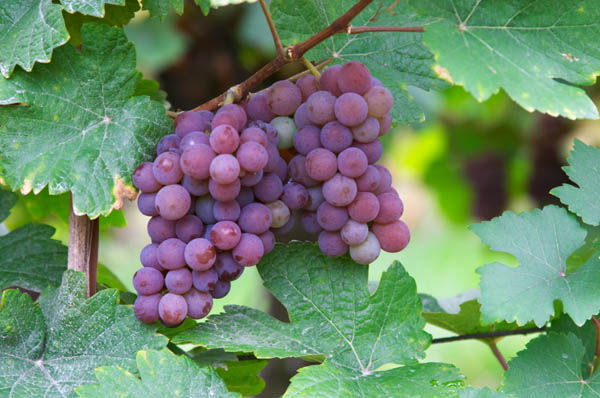
On to the wines and I start with grauburgunder:
Walsheimer Silberberg Grauburgunder Spätlese 2011 had balanced acidity and good fruit sweetness and felt like a nice start to the tasting of this grape. Produced by Weingut Karl Pfaffmann in Palatinate.
Considerably drier was Weingut Becker-Land Graf’s Grauer Burgunder 2011 from Rheinhessen although residual sugar was said to be 5 g/l.
Really dry was Baden producer Dr. Heger Ihringer’s Winkler Berg Grauburgunder Spätlese trocken 2011, while Weingut Achkarren in Kaiserstuhl produced a very elegant wine with high acidity and lovely fruit in the form of Ackarrer Castellberg Grauer Burgunder Kabinett trocken 2012.
The only wine from Saxony present, as far as I could see, was Schloss Proschwitz Grauer Burgunder trocken 2011, which had nice balance of acidity and sweetness, despite relatively high measures on both fronts. Produced by Weingut Schloss Proschwitz Prinz zur Lippe.
The weissburgunder tasting started with an affordable wine from Weingut Friedrich Kiefer. It was just about right in all respects, nothing sticking out. Just right for a buffet or why not in the garden next summer? The wine was Weisser Burgunder trocken from 2011.
A few notches up in quality, also from Baden, was the Malterdinger Bienenberg Weisser Burgunder trocken 2010 that had fresh acidity, good fruit and a long fine finish. The wine came from Weingut Bernard Huber in Malterdingen.
If you want to try two real contrasts against each other you can set the Weingut Matthias Klein’s Weisser Burgunder Classic halbtrocken 2011 Rheinhessen against Ihringer Winkler Berg Weissburgunder Spätlese trocken 2011 from Dr. Heger in Baden. The latter feels very dry in comparison and this pair illustrates well the breadth of pinot blanc styles you find in Germany.
In conclusion, I note that wines from non-traditional German grape varieties are increasingly found in markets outside of Germany. Therefore, take this opportunity to try this type of wine as they pop up.
Carl-Erik Kanne is a long time wine enthusiast and fervent wine taster. He reports from wine tastings and wine events in Stockholm for BKWine Magazine.


